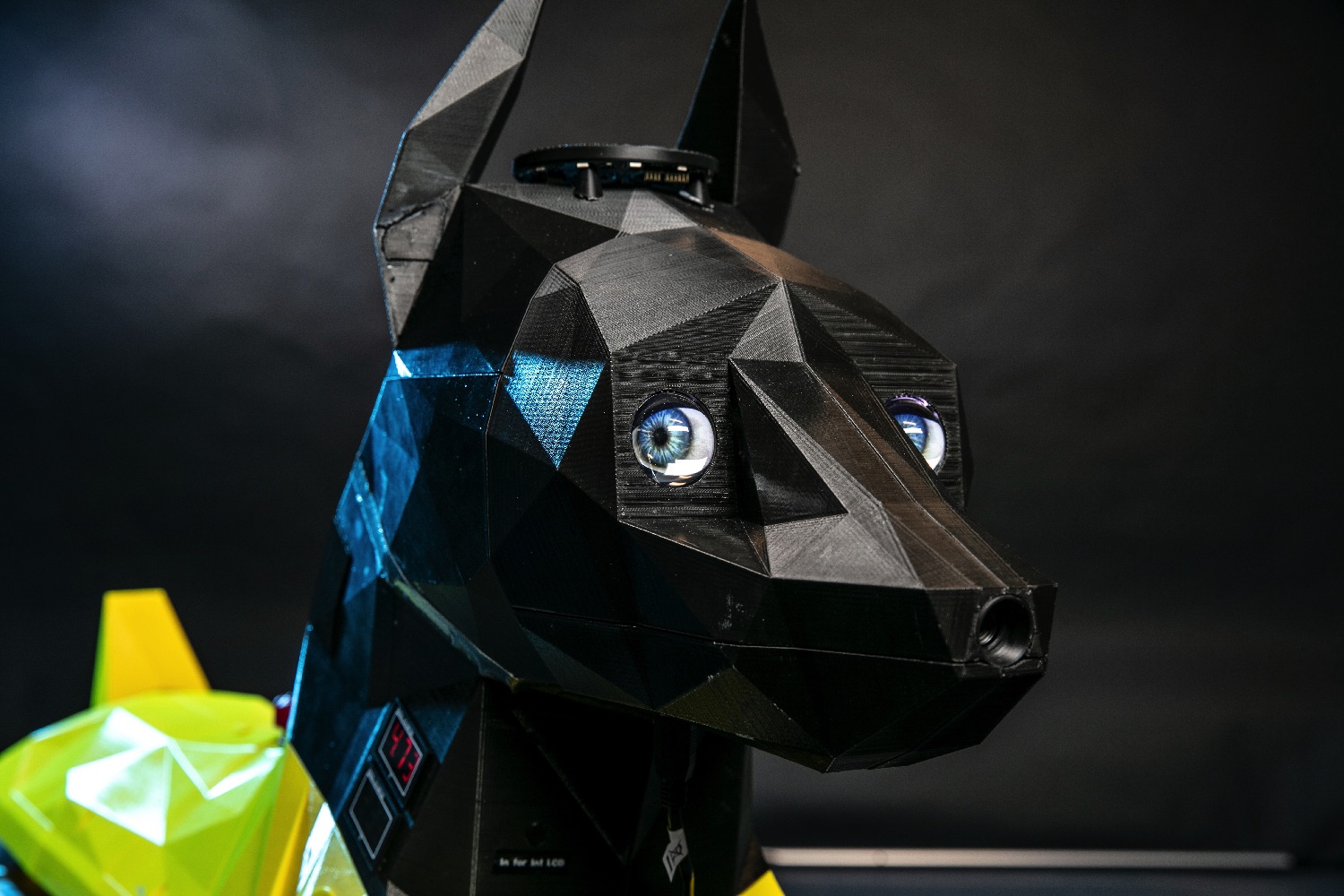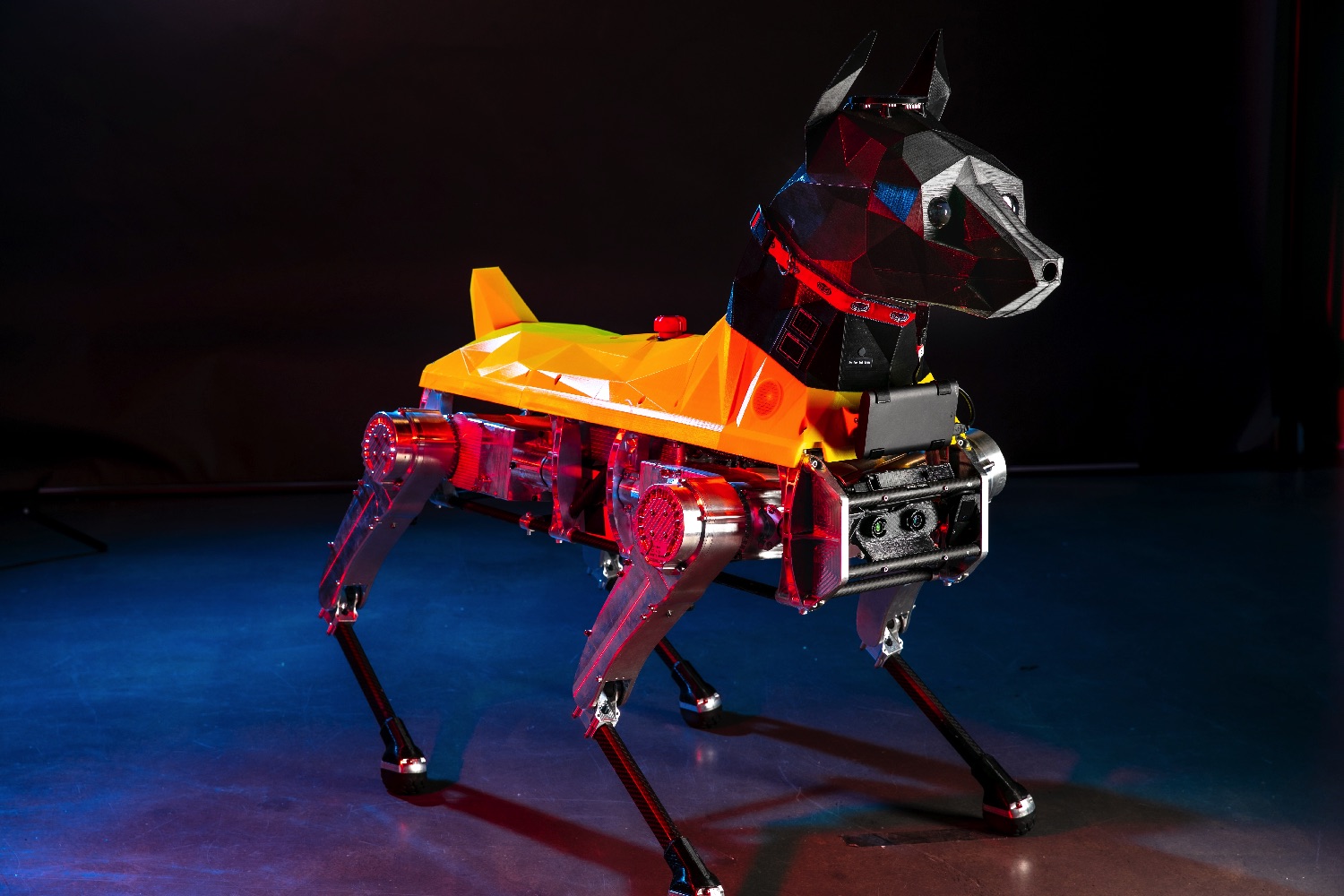It’s one thing to claim that you’re the leader in a particular market when you’re one of the only ones competing in it. It’s another altogether to enter a crowded sector and claim that you’ve hit a home run. That’s what researchers from Florida Atlantic University’s Machine Perception and Cognitive Robotics Laboratory say they’ve achieved with their new dog-inspired quadruped robot. Joining the likes of Boston Dynamics’ Spot robot and the oil rig-inspecting Anymal, they have built a new Doberman pinscher-inspired robot dog called Astro — and they’re confident that they’re onto a winner.
“We honestly think Astro may be the coolest robot on the planet right now,” Elan Barenholtz, an associate professor in FAU’s Department of Psychology, told Digital Trends. “There is a lot of buzz in the community around the flexibility and robustness of quadruped robots. But other models out there don’t have a brain to match the sophistication of the body and mostly operate based on human remote control. What we are developing is a truly autonomous robotic ‘animal.’ Astro can see, hear and feel — and, in the near future, smell — using onboard sensors.”
The “coolest robot on the planet” is a tall order, but Astro certainly has a few things to get excited about. Not only does it look like a dog — thanks to its 3D-printed head — but it’s designed to learn like one, too. It boasts a radar-imaging module, onboard cameras, and a directional microphone. These are powered by a set of Nvidia Jetson TX2 GPUs which run neural networks that take this sensory data, process it, and use it to make behavioral decisions in real time. Astro can be taught new actions and associations. Right now, that means commands like “sit,” but over time its creators say that he’ll be able to learn hand signals, different colors, and even a variety of languages.
“We think this is the only path to achieve true, embedded, artificial intelligence that can operate in complex real-world environments,” Barenholtz said.
This isn’t just about a neat proof-of-concept, either. The team behind Astro (which also includes William Hahn and Pedram Nimreezi) believe they’ve developed a multi-purpose platform which could be used in any situation where you need eyes, ears, and a brain, but it’s not necessarily safe or practical for a human.
“We are directly developing for some specific applications such as safety monitoring using A.I. that can detect weapons and suspicious activity or search-and-rescue that can localize and recognize distress sounds and move to that location,” Barenholtz continued. “And, of course, there is always the robotic pet option. Who wouldn’t want to be the first on the block to walk an autonomous A.I. good boy down the street?”
Editors' Recommendations
- Dog-like Spot robot gets a gig to scare wildlife
- The squishy Sensiworm robot goes places other robots can’t
- Hyundai’s new MobED robot can carry booze and babies
- Watch Xiaomi’s first video featuring its robotic CyberDog
- Tiny insect-inspired robot has speed of a cockroach and agility of a cheetah





